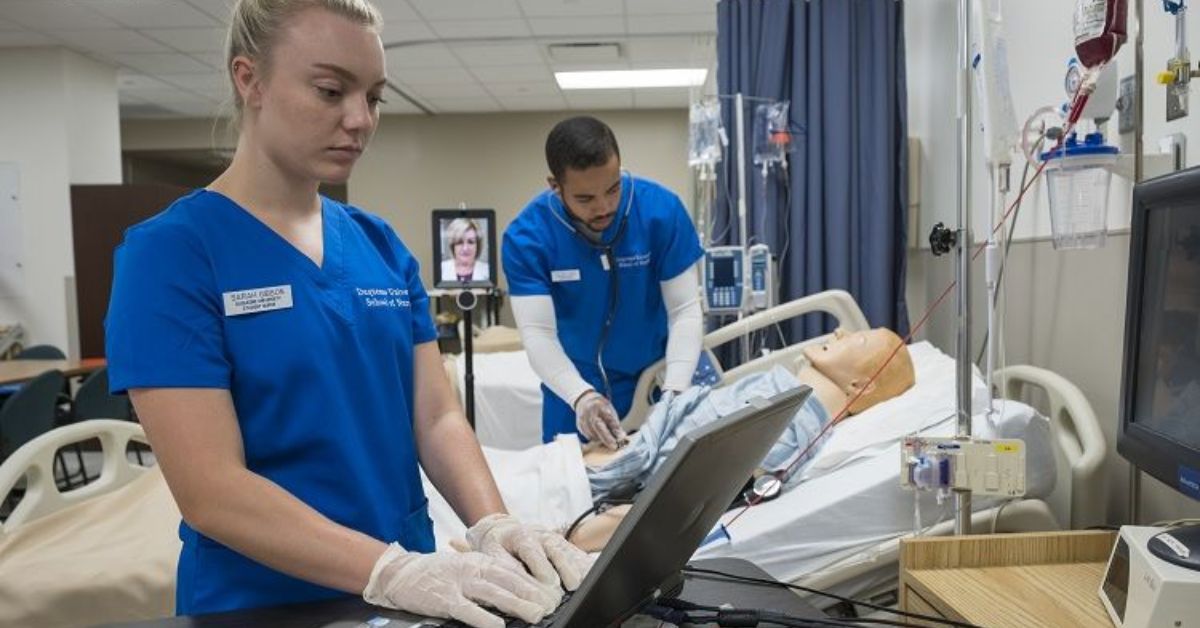Preparing for Changes in Nurse Training has never felt more urgent. A shift at the top of government usually brings a domino-effect of policy tweaks, budget reshuffles, and regulatory updates. For schools of nursing, clinical partners, and practicing nurses alike, the next four years will recalibrate how future cohorts are educated, assessed, and deployed into the workforce.
Recent White House proposals outline sweeping cuts to non-defence discretionary spending, including healthcare education, while simultaneously redefining priorities for federal nursing grants and accreditation benchmarks.The Washington Post What this means on the ground is that every stakeholder must start Preparing for Changes in Nurse Training by stress-testing curricula, diversifying funding streams, and embedding new technology and equity mandates.
This article guide walks you through the expected policy landscape, probable curriculum shifts, and actionable strategies that academic leaders, nurse educators, and individual learners can deploy immediately. By consistently Preparing for Changes in Nurse Training rather than reacting to them, the profession can remain agile, protect quality standards, and—most importantly—ensure safe, person-centred care for the communities it serves.
In This Article
1. Policy Snapshot: What the New Administration Has Already Signalled
Preparing for Changes in Nurse Training begins with understanding which levers of federal power are moving. The latest draft budget seeks a 23 % reduction in non-defence discretionary allocations, threatening programmes that subsidise clinical faculty salaries, rural placements, and simulation laboratories.The Washington Post Simultaneously, Title VIII Nursing Workforce Development—the historic lifeline for scholarships and loan-repayment options—faces selective preservation of the Nurse Corps while other sub-programmes risk elimination.
| Programme | FY 2025 Baseline Funding | FY 2026 Proposal | Focus Area | “Prepare” Action |
|---|---|---|---|---|
| Nurse Corps | $340 m | $345 m | Loan repayment & scholarships | Maintain applicant pipelines |
| Nurse Education, Practice, Quality & Retention | $47 m | Eliminated | Faculty & residency support | Seek state or philanthropic grants |
| Nursing Workforce Diversity | $28 m | Eliminated | Under-represented student support | Form local equity coalitions |
| Geriatrics Workforce Enhancement | $48 m | Rolled into broader “Healthy Ageing” pot | Elder-care curricula | Join multi-disciplinary bids |
Table 1: Potential funding disruptions and proactive responses. Source data: HRSA budget justifications and leaked HHS summary sheets.
2. Accreditation Overhaul: CCNE’s New 2024 Standards
From January 2025 every programme undergoing site visits will be judged against CCNE’s 2024 Standards, with sharper language on simulation quality, student wellbeing metrics, and diversity outcomes.AACN Preparing for Changes in Nurse Training means mapping each course objective to the updated benchmarks, updating evidence portfolios, and training faculty on revised evaluation rubrics.
Key Shifts to Note
- Outcome-Focused Evidence: Programmes must show data on graduates’ first-time NCLEX-RN pass rates and clinical competence, not merely course completion rates.
- Psychological Safety: Students’ mental-health resources now influence accreditation status, requiring institutions to embed trauma-informed teaching.
- Equity Indicators: Aggregate data on enrolment, retention, and graduation of racially diverse students must feed continuous-improvement loops.
3. Curriculum Evolution: Core Themes Through 2029
Preparing for Changes in Nurse Training is also about anticipating what content graduates will need five years from now.
3.1 Public-Health Resurgence
Pandemic after-action reviews highlight skills in outbreak surveillance, vaccine advocacy, and community education. Expect mandated public-health credit hours and inter-semester service-learning blocks.
3.2 Digital Fluency and Tele-Health
The administration has pledged to expand broadband and virtual-care reimbursement models; nurse curricula must cover tele-triage protocols, cybersecurity basics, and remote-patient-monitoring analytics.
3.3 AI-Enhanced Decision-Making
Federally funded pilots are exploring clinical decision support powered by generative AI. Student nurses will soon interact with algorithmic handover summaries and predictive risk dashboards.
3.4 Climate-Related Health Content
A growing federal emphasis on heat-illness prevention and disaster response means integrating environmental health, energy-grid failure scenarios, and water-borne disease management.
4. Faculty Development and Workforce Sustainability
Faculty shortages threaten to bottleneck enrolment precisely when demand is peaking. Preparing for Changes in Nurse Training therefore hinges on faculty-retention packages:
- Competitive adjunct pay via endowments and employer match funding.
- Flexible job-share models to accommodate clinicians who also teach.
- Funded doctoral fellowships aligned with emerging policy topics (e.g., climate health).
5. Clinical Placement Innovation
Hospitals grappling with staffing ratios are trimming student slots. Preparing for Changes in Nurse Training calls for:
- High-Fidelity Simulation Centres that replicate complex ICU scenarios.
- Community-Based Rotations in schools, shelters, and tele-health hubs.
- Micro-credential Partnerships with non-traditional providers (urgent-care chains, retail clinics) offering shorter, skills-intensive placements.
6. Technology Toolkit for Modern Nurse Educators
| Digital Resource | Purpose | Low-Cost Entry Strategy | “Prepare” Checklist |
|---|---|---|---|
| Virtual Reality Simulation | Complex procedure rehearsal | Build consortium to share licences | Align scenarios with CCNE objectives |
| AI-Powered Debrief Software | Analytics on student errors | Start with open-source Django apps | Train faculty ‘super-users’ |
| Learning-Management Chatbots | 24/7 Q&A for students | Integrate university-wide licence | Monitor for accuracy & bias |
7. Diversity, Equity & Inclusion (DEI) Reimagined
Although federal DEI grants may shrink, employers and state boards continue to demand culturally competent graduates. Preparing for Changes in Nurse Training involves:
- Embedding inclusive-language OSCE stations.
- Offering bilingual clinical electives.
- Sponsoring peer mentorship circles that bridge socioeconomic divides.
8. Regulatory Changes: Interstate Practice Compacts & Scope Shifts
Seventeen additional states are expected to join the Nurse Licensure Compact by 2026, easing mobility but raising curriculum stakes around varied scope-of-practice laws. Schools must add regulatory-navigation modules and updated jurisprudence review sessions.
9. Competency-Based, Flexible Learning Pathways
The new administration champions outcomes over seat time. Preparing for Changes in Nurse Training therefore points towards:
- Portfolio-Based Assessment replacing clock-hour minimums.
- Stackable Micro-credentials that ladder into full degrees (e.g., wound-care certificate → BSN credit).
- Hybrid Calendars with accelerated eight-week blocks for career changers.
10. Student Wellbeing & Financial Resilience
With possible cuts to Title VIII scholarships, students face cost pressures. Institutions can:
- Create revolving emergency-grant funds using alumni donations.
- Negotiate bulk textbook e-licences.
- Embed financial-planning workshops into orientation.
11. Inter-Professional Collaboration Frameworks
Preparing for Changes in Nurse Training also means practising alongside pharmacists, social workers, and data analysts from day one. Simulated ward rounds and capstone quality-improvement projects across disciplines will mirror an increasingly team-based reality.
12. Global Health & Exchange Opportunities
If federal support contracts, consortium-led international placements funded by NGOs can maintain global-health competencies. Tele-mentoring networks (Project ECHO style) can virtually pair students with international mentors.
13. Data-Driven Quality Improvement
- Key Performance Dashboards: Real-time NCLEX analytics, practicum site feedback, and diversity metrics.
- Predictive Attrition Models: Machine-learning tools flag at-risk students for early intervention.
14. Twenty Immediate Action Steps for Leaders
- Convene a cross-functional “Policy Rapid-Response” taskforce.
- Cross-walk every course outcome with CCNE 2024 standards.
- Draft grant applications targeting state innovation funds.
- Map diversity gaps and set SMART recruitment targets.
- Audit simulation inventory; prioritise upgrades.
- Identify elective credits convertible to micro-credentials.
- Train all clinical mentors in tele-health etiquette.
- Build faculty AI literacy workshops.
- Establish mental-health first-aid certification for students.
- Negotiate new community-clinic placement MOUs.
- Integrate climate-health case studies across semesters.
- Launch a student-run policy blog to track legislation.
- Embed financial-counselling modules in year-one orientation.
- Pilot an interstate-compact jurisprudence boot camp.
- Publish transparent NCLEX-pass dashboards.
- Create alumni mentorship rosters for first-generation students.
- Incentivise faculty scholarship on curriculum innovation.
- Adopt an LMS analytics plug-in for engagement metrics.
- Co-design capstone projects with public-health departments.
- Schedule annual “Preparing for Changes in Nurse Training” retreats.
Must Read:
- Advocating for Nurses: Navigating Policy Changes in the Trump Era
- How Trump’s Economic Policies Could Affect Nurse Salaries and Job Security?
- The Pros and Cons of Trump’s Approach to Healthcare Reform for Nurses
Final Words:
The next presidential term promises turbulence in healthcare funding, workforce regulation, and accreditation expectations. Yet turbulence often accelerates progress. Institutions that treat policy shifts as a catalyst—rather than a constraint—will graduate nurses equipped for tomorrow’s clinical realities. Preparing for Changes in Nurse Training is therefore a continuous cycle: scan the horizon, stress-test your systems, secure diversified revenue, and iterate on pedagogy. Doing so not only safeguards programme viability but also honours the social contract at the heart of nursing—advocating for vulnerable individuals and communities when the policy winds blow cold. Faculty who champion innovative placement models, competency-based pathways, and data-informed teaching will cultivate graduates who are agile, ethically grounded, and digitally fluent.
For every stakeholder—academic dean, clinical partner, student, or practising nurse—the watchword is collaboration. Grant cuts can be offset by strategic alliances, simulation shortfalls mitigated through shared resource hubs, and accreditation hurdles cleared by transparent data dashboards. Preparing for Changes in Nurse Training ultimately crystallises into a mindset: stay politically literate, remain pedagogically curious, and never relinquish the profession’s core values of compassion, equity, and evidence-based practice. In doing so, nursing will not merely endure the policy pendulum; it will set the tone for resilient, community-anchored healthcare well into the 2030s.







